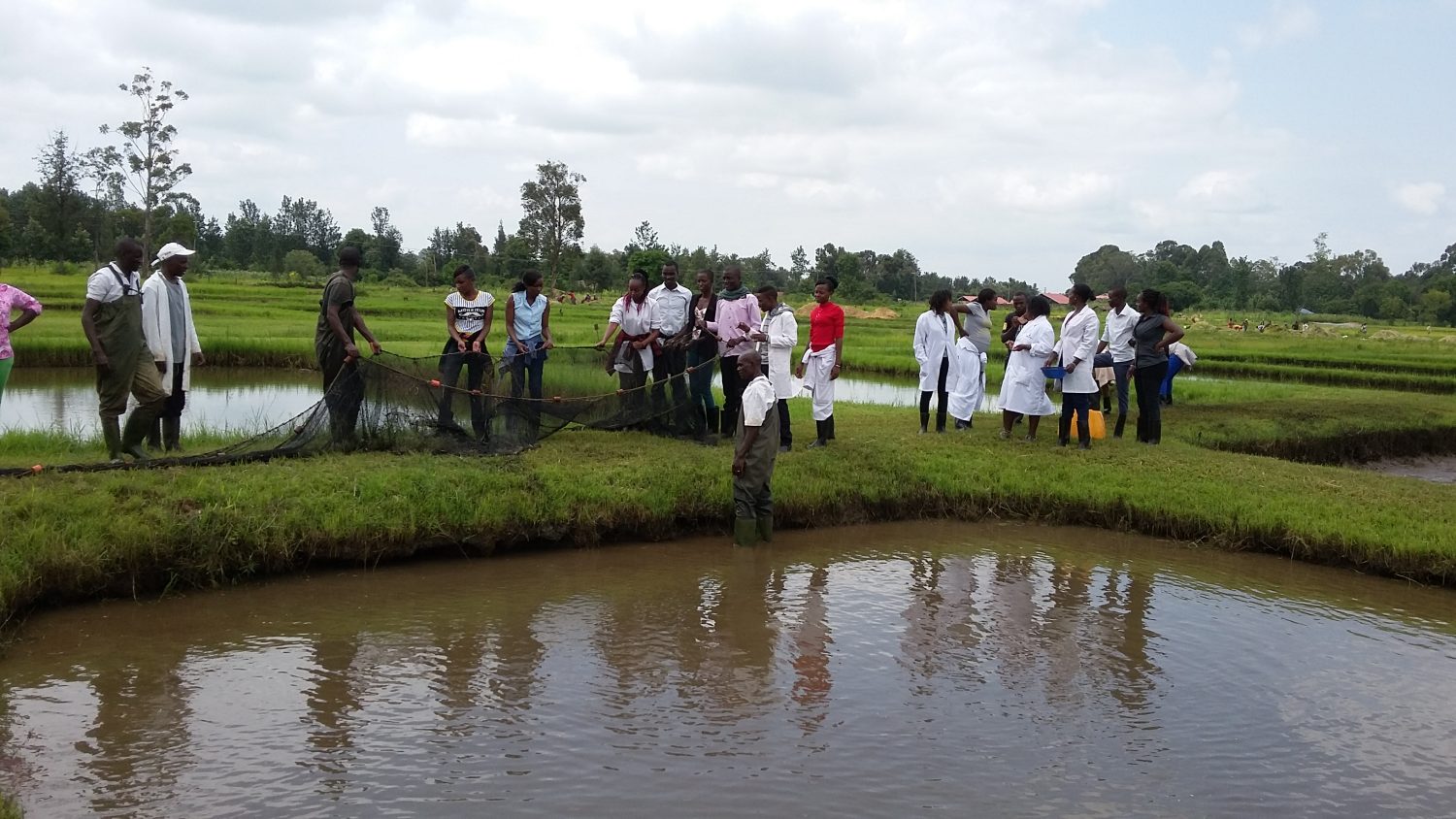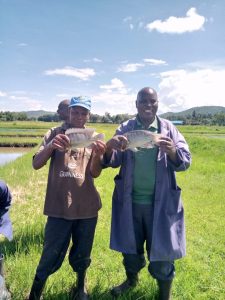The dominant supplier of fish-capture fisheries is currently facing maximum sustainable yield in most rivers and lakes over the past 5 years. As a result, aquaculture is viewed as the alternative to bridging the gap between widening demand and supply. However, aquaculture sector is constrained by low production and consumption levels, limiting the economic role within the food system of this value chain.

We have identified the following four objectives for improvement of the Aquaculture sector:
(i) Increase sustainable smallholder aquaculture productivity and climate resilience through improved seed and safe feed inputs, technologies, innovations and management practices
(ii) Enhance opportunities for youth and women through fish market innovations, value creation, and food waste/loss reduction for increased incomes and nutrition
(iii) Increase availability, access and consumption of nutrient rich and safe fish and fish products among women, men, youth, and young children
(iv) Strengthen aquaculture research, education, training, outreach and knowledge exchange for sustainable aquaculture intensification.
These are also well aligned with Vision 2030 and County Integrated Development Plans (CIDPs).

